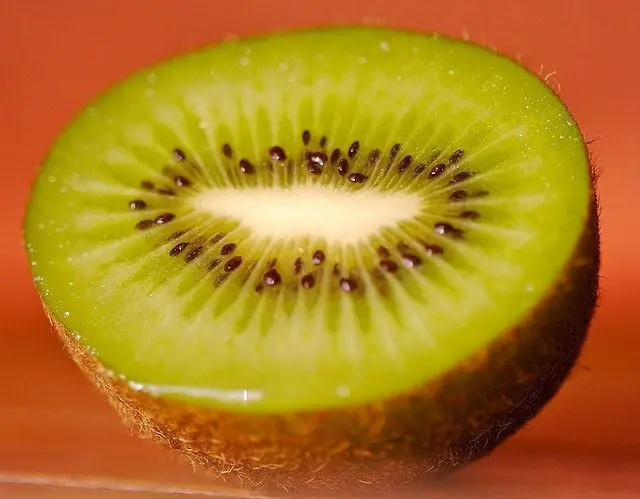- Author Brandon Turner [email protected].
- Public 2023-12-17 01:37.
- Last modified 2025-01-24 11:12.
Kiwis appeared on the shelves of our stores not so long ago. This fruit was bred in New Zealand from actinidia seeds. When the fruit took root, the New Zealanders really liked it and they named it in honor of the symbol of the country - the kiwi bird.

Instructions
Step 1
Chinese actinidia was introduced to New Zealand in 1906, but kiwi only appeared in its modern form 73 years ago. Initially, the berry was named "Chinese gooseberry", but later it was renamed.
Step 2
The plant was brought to New Zealand by Alexander Ellison, who became interested in the ornamental Mihutao plant because of its beautiful white flowers. At that time, its fruits were tasteless, small and tough. However, in the New Zealand climate and thanks to the efforts of an amateur gardener, it was possible to grow a huge liana bush, strewn with giant and very tasty berries, which outwardly resembled the famous New Zealand kiwi bird. The growth rate of the plant lianas reached 20 cm per day, and the harvest ripened every 2 days.
Step 3
They learned about the fruits of the plant in the 30s, when an industrial crisis broke out in the country. Post clerk James McLocklin, who lost his job, decided to start growing plants. He found the very same Chinese gooseberry and was the first to grow it for sale. Liana grew very quickly and gave a gigantic harvest. Other entrepreneurs got interested in his idea and people from all over New Zealand learned about the kiwi. Today, about two billion of the plant's fruits are sold annually in the world.
Step 4
Kiwi contains a lot of vitamins. One fruit contains 1.5 daily values of vitamin C, carotene, vitamins B1, B2, E and PP, as well as a large amount of potassium. Berries help lower blood pressure, get rid of heartburn. Several medical studies have shown that the fruits of the plant have a positive effect on the functioning of the heart and reduce the risk of blood clots.






